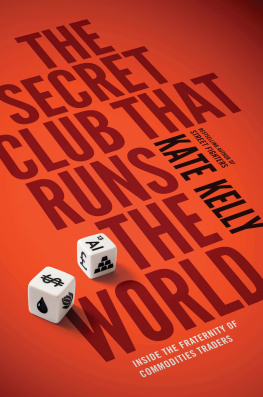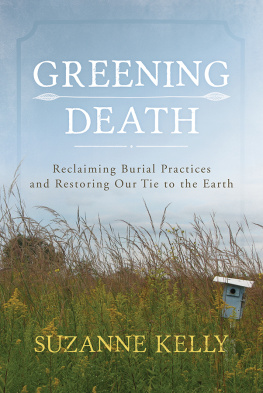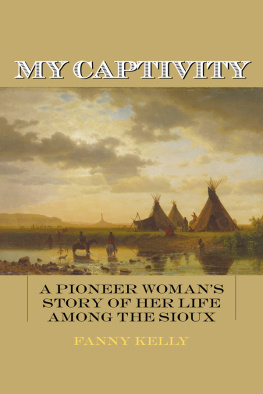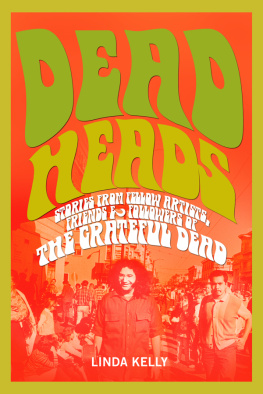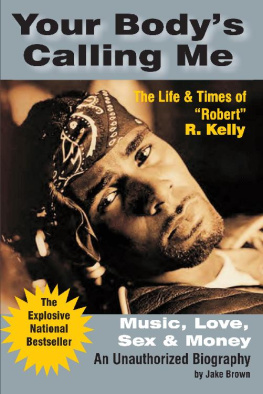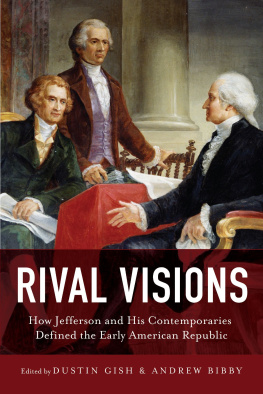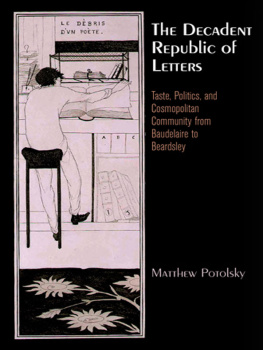Kelly - Republic of Taste Art, Politics, and Everyday Life in Early America
Here you can read online Kelly - Republic of Taste Art, Politics, and Everyday Life in Early America full text of the book (entire story) in english for free. Download pdf and epub, get meaning, cover and reviews about this ebook. year: 2016, publisher: University of Pennsylvania Press, Inc., genre: Romance novel. Description of the work, (preface) as well as reviews are available. Best literature library LitArk.com created for fans of good reading and offers a wide selection of genres:
Romance novel
Science fiction
Adventure
Detective
Science
History
Home and family
Prose
Art
Politics
Computer
Non-fiction
Religion
Business
Children
Humor
Choose a favorite category and find really read worthwhile books. Enjoy immersion in the world of imagination, feel the emotions of the characters or learn something new for yourself, make an fascinating discovery.
- Book:Republic of Taste Art, Politics, and Everyday Life in Early America
- Author:
- Publisher:University of Pennsylvania Press, Inc.
- Genre:
- Year:2016
- Rating:5 / 5
- Favourites:Add to favourites
- Your mark:
- 100
- 1
- 2
- 3
- 4
- 5
Republic of Taste Art, Politics, and Everyday Life in Early America: summary, description and annotation
We offer to read an annotation, description, summary or preface (depends on what the author of the book "Republic of Taste Art, Politics, and Everyday Life in Early America" wrote himself). If you haven't found the necessary information about the book — write in the comments, we will try to find it.
Kelly: author's other books
Who wrote Republic of Taste Art, Politics, and Everyday Life in Early America? Find out the surname, the name of the author of the book and a list of all author's works by series.
Republic of Taste Art, Politics, and Everyday Life in Early America — read online for free the complete book (whole text) full work
Below is the text of the book, divided by pages. System saving the place of the last page read, allows you to conveniently read the book "Republic of Taste Art, Politics, and Everyday Life in Early America" online for free, without having to search again every time where you left off. Put a bookmark, and you can go to the page where you finished reading at any time.
Font size:
Interval:
Bookmark:

Republic of Taste
EARLY AMERICAN STUDIES
SERIES EDITORS
Daniel K. Richter, Kathleen M. Brown, Max Cavitch, and David Waldstreicher
Exploring neglected aspects of our colonial, revolutionary, and early national history and culture, Early American Studies reinterprets familiar themes and events in fresh ways. Interdisciplinary in character, and with a special emphasis on the period from about 1600 to 1850, the series is published in partnership with the McNeil Center for Early American Studies.
Republic of Taste

Art, Politics, and Everyday Life in Early America
Catherine E. Kelly
PENN
University of Pennsylvania Press
Philadelphia
Copyright 2016 University of Pennsylvania Press
All rights reserved. Except for brief quotations used for purposes of review or scholarly citation, none of this book may be reproduced in any form by any means without written permission from the publisher.
Published by
University of Pennsylvania Press
Philadelphia, Pennsylvania 19104-4112
www.upenn.edu/pennpress
Printed in the United States of America on acid-free paper
1 3 5 7 9 10 8 6 4 2
A Cataloging-in-Publication record is available from the Library of Congress
ISBN 978-0-8122-4823-4
For Richie: M FF D
Contents

INTRODUCTION

The American Republic of Taste
Henry Cheever, an academy student in Massachusetts, was determined to hone his prose, molding it to meet the standards laid out by Hugh Blairs Lectures on Rhetoric and Belles Lettres and by Henry Home, Lord Kamess Elements of Criticism. He filled his commonplace book with epigrams culled from the works of Milton, Goldsmith, Dryden, and Pope. Keen to demonstrate his mastery of the fine style prescribed by the rhetoricians and exemplified by the poets, he set out to describe the summer sunset he had just witnessed. In July 1829, after beseeching the Omniscient Potentiate for guidance, he wrote that the borders of the western horizon glowed like a golden flame, their light punctuated by blue pyramidial mounts like [a] sudden flash of spirit in raging roaring flames. In crafting his tortured summer sunset, Cheever marked himself not just as a reader and writer but also as a looker, as an active and engaged spectator whose golden flames and blue pyramidial mounts derived not just from a particular way of reading and writing but also from a particular way of seeing.
Lucy Sumner, newly married and intent on embodying the virtues that spelled republican womanhood, had fallen into the habit of visiting Daniel Bowens Columbian Museum. The paintings, taxidermied birds, wax figures, and curiosities provided her circle with rational and refined amusement, especially when compared to the risqu and disgusting circus that had been attracting far more patronage than she thought proper. But Sumner valued the Columbian for more than its admirable collection. The museum encouraged a distinctand distinctly rewardingsort of spectatorship. When one spent time at the Columbian, she explained to her friend Eliza Wharton, the eye is gratified, the
Sometime in the late 1780s, Samuel Powel, one of the wealthiest and most influential men in Philadelphia, paid tribute to his friend and fellow revolutionary, George Washington, by tracing his silhouette and inscribing General Washington on its back. We have no information about the circumstances under which Powel made the profile, although family lore held that he used a recently invented Argand lamp to project Washingtons profile on the wall. We know only that the Powel family took pains to save it, passing the memento from one generation to the next until it finally found a home upstairs in their elegant townhouse, now a museum. The impromptu likeness testifies to the so-called Patriot Mayors close personal and political relationship with the pater patriae. Its preservation testifies to his familys lasting pride in that association. But behind this all-too-predictable story about prestige and personal connection is another set of stories, even if we cannot recover them. What impulses led one powerful and cosmopolitan man to amuse himself by drawing the rough silhouette of another? What impulses led a revolutionary hero known for his reserve to amuse himself and his friends in this way?
A teenaged academy student. A minor character in the United States first bestselling novel. One man of affairs nearing the end of his life and another already securing his place in history. At first glance, the individuals at the center of these three vignettes seem to have little in common with one another. But in describing a sunset, touting the moral benefits of museum attendance, or creating a profile, each claimed citizenship in the republic of taste. To situate Henry Cheever, Lucy Sumner, Samuel Powel, and George Washington in the republic of taste is to place them at the intersection of the early republics material, visual, literary, and political cultures. They knew that the exercise of their taste was caught up in the material world. It depended on taxidermied animals and Argand lamps. It demanded both beautiful vistas and books that contained a vocabulary capable of describing those vistas. Whether they believed that their distinguishing taste was inborn (and therefore a marker of breeding and station) or acquired (and thus the product of application and study), they understood that it was predicated upon, demonstrated through, and confirmed by reading, writing, and lookingprocesses that they believed to be inextricably bound together. Cheever, Sumner, Powel, and Washington also believed that their shared aesthetic sensibilities connected them to other like-minded individuals.

Figure 1. Samuel Powel, Silhouette of George Washington, Philadelphia, before 1790. The likeness is now part of the permanent exhibit at Powel House. The note attached to the profile tells the story of its creation and preservation. Courtesy of the Philadelphia Society for the Preservation of Landmarks.
They trusted that these shared affinities, which provided so much personal pleasure, also advanced the public good and thus held out great promise in the American republic. Never mind that the newly formed United States lacked the Old Worlds aesthetic infrastructure. In their eyes, the nation itself constituted a kind of gallery, a series of real and imagined spaces in which republican citizens could display and affirm their sensibility, their taste, and their virtue.
Before the American Revolution, educated and affluent Anglo-Americans sought access to the tasteful world that emerged from the pages of these texts in order to strengthen their ties to the metropole, in order to become more Anglo and less American. During and after the American Revolution, however, they invested this transatlantic discourse with enormous and explicitly republican significance.through political issues ranging from government structures, to legislative representation, to qualifications for citizenship, to the meaning of liberty itself.
If taste accommodated social aspiration and encouraged political debate, it also suggested the possibility of affinity grounded in a shared national identity. Putatively free from the Old Worlds decadence, taste promised to be a vehicle for discovering and exercising a distinctly American genius. And putatively free from sectional prejudice and partisan strife, taste provided a platform that would encourage men and women to rise above their differences. Like manners and sensibility, the periods other shibboleths, taste promised to bind the disparate citizens of a republic together while setting them apart from Europeans. Thinkers as different as Thomas Jefferson and Joseph Dennie, whose views extended across the early national political spectrum, clung to the hope that a republic could be forged at least partly out of taste. With so much at stake, it is small wonder that aesthetic preoccupations peppered the pages of the U.S. periodical press and turned up in speeches given to mark everything from college graduations to July 4th celebrations. Thus did a transatlantic republic of taste distill into an American republic of taste.
Next pageFont size:
Interval:
Bookmark:
Similar books «Republic of Taste Art, Politics, and Everyday Life in Early America»
Look at similar books to Republic of Taste Art, Politics, and Everyday Life in Early America. We have selected literature similar in name and meaning in the hope of providing readers with more options to find new, interesting, not yet read works.
Discussion, reviews of the book Republic of Taste Art, Politics, and Everyday Life in Early America and just readers' own opinions. Leave your comments, write what you think about the work, its meaning or the main characters. Specify what exactly you liked and what you didn't like, and why you think so.


